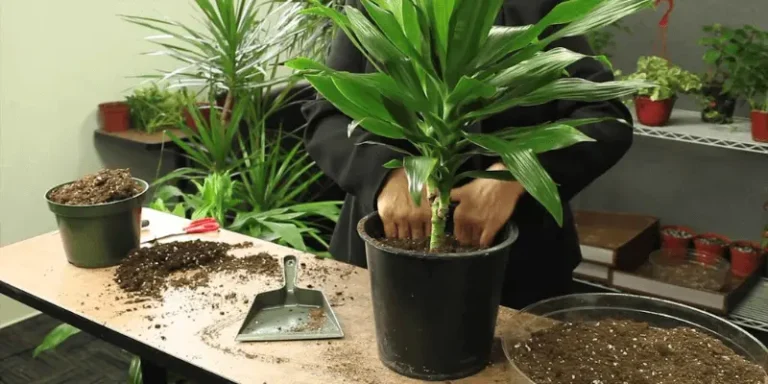Dragon Tail Plant (Epipremnum pinnatum): How To Grow & Care For Indoor Dragon Tail
The dragontail plant, scientifically known as Epipremnum pinnatum, is a popular and versatile indoor plant prized for its attractive appearance and low-maintenance nature. With its cascading vines adorned with colorful leaves, this plant adds natural beauty to homes, offices and interior spaces. Loved for its air-purifying qualities and adaptability to a variety of lighting conditions, the dragontail plant has become a favorite choice for plant enthusiasts and interior decorators. Whether placed in hanging baskets, pots, or used as climbing decorations, it easily enhances the ambiance of any room, making it a beloved companion for both novice and experienced plant enthusiasts.
Indoor Growth & Propagation
Growing a dragon Tail plant (Epipremnum pinnatum) in an indoor lawn can be a pleasant way to infuse your living space with both greenery and beauty. To make this journey, you’ll need a healthy dragon Tail plant or a well-rooted stem cutting. Find a spacious container or planter with adequate drainage, making sure it accommodates the plant’s growth in your indoor lawn area. Fill it with a well-draining potting mix, water well and allow the top inch to dry out between waterings while keeping the soil moist. Locate the container in a well-lit area with bright, indirect light, creating the perfect environment for the plant to thrive. Keep your indoor lawn in a temperature range of 65°F to 85°F (18°C to 29°C) and maintain a moderate humidity level. As your dragontail plant grows, remember to trim trailing vines and remove damaged leaves to ensure a vibrant appearance. This nurturing process will reward you with cascading vines and lush foliage, transforming your indoor lawn into a serene and beautiful space.
Growing dragontail plants in pots:
Materials you will need:
Dragontail Plant: Get a healthy dragontail plant or take stem cuttings for propagation.
Pot: Choose a pot with drainage holes. The size of the pot should be according to the growth of the plant. A 6- to 8-inch pot is suitable for a small plant, but you can choose a larger one for more mature plants.
Potting mix: Use a well-draining potting mix, such as a mixture of peat, perlite and compost.
Watering Can: For regular watering.
Indirect Light: Place the pot in a bright, indirect light location. Avoid direct sunlight, which can burn the leaves.
Steps for growing in pots:
Select a healthy plant or cutting: Start with a healthy dragon tail plant or a well-rooted stem cutting.
Choose the right vessel: Choose a pot with drainage holes to prevent waterlogged soil. Make sure the pot is slightly larger than the root ball.
Prepare the potting mix: Fill the pot with potting mix, leaving enough space to accommodate the plant’s root system.
Apply the dragon tail: Gently remove the plant from the nursery pot and place it in the center of the new pot. Fill the spaces with potting mix, making sure the plant is seated deep in the nursery pot.
Watering: Water the plant thoroughly after planting to settle the soil. Keep the soil consistently moist but not waterlogged. Allow the top inch of soil to dry out between watering.
Provide indirect lighting: Place the pot in a bright, indirect light location. Dragon tail plants thrive in these conditions.
Temperature and humidity: Maintain a temperature range of 65°F to 85°F (18°C to 29°C) and moderate humidity. Use a moisture tray or mist the plant occasionally.
Fertilization: Feed your plant with a balanced liquid fertilizer every 4-6 weeks during the growing season (spring and summer).
Pruning and Care: Cut back vines to encourage bushy growth. Remove any yellow or dead leaves to keep your plant vibrant.
Reporting: Repot your plant every 2-3 years or when it is rooted. Choose a slightly larger pot and freshen the soil.
Growth pattern
The growth pattern of the dragon tail plant (Epipremnum pinnatum) is a fascinating and beautiful process to observe. This hardy and versatile plant can thrive in a variety of conditions, making it a popular choice for both beginners and experienced plant enthusiasts. Here, we will review the growth of the dragontail plant and provide insight into its growth.
- Early Development:
When you first bring a dragontail plant home or start from a cutting, you’ll notice that its initial growth consists of a central stem with a few leaves. These leaves are usually heart-shaped and can show different colors with patterns of green and creamy white. - Leaf production:
As the plant matures, it begins to produce more leaves along the main stem. These leaves are characterized by their long, narrow shape with pronounced wavy edges. A variety of unique patterns resembling dragon scales become more prominent with each new leaf. - Trailing Vines:
One of the most distinctive features of the Dragon Tail plant is its trailing vines. As the plant continues to grow, it sends out long, cascading vines that can drape gracefully around the sides of a pot or container. These vines can reach several feet in length, adding a beautiful and lush touch to your indoor space. - Leaf size and color:
Dragontail plant leaves can vary in size, with mature leaves being larger than early leaves. The variety of patterns also becomes more complex and striking as the plants age. The combination of dark and light green with creamy white creates a visually appealing contrast. - Bushier Growth:
With proper care and periodic pruning, the dragontail plant can become a shrub over time. Pruning involves trimming the ends of trailing vines, which encourages the plant to branch out and produce more plants. This gives the plant a fuller and more robust appearance. - Ascending tendency:
In its natural habitat, the dragontail plant is known for its climbing behavior, as it uses trees and other supports to reach the canopy. Indoors, it may exhibit this tendency to climb by attaching itself to nearby structures or trellises if provided. - Low Maintenance:
One of the reasons the dragontail plant is so popular is its low maintenance requirements. It can thrive in a variety of light conditions, including low light, and is quite forgiving when it comes to watering. Check soil moisture and water regularly when the top inch feels dry. - Longevity:
When cared for properly, Dragon Tail plants can live for many years, making them long-term companions in your indoor garden.
Propagation
To successfully propagate a Dragon Tail plant, gather your materials: a healthy parent plant free of pests or diseases, shears or shears for clean cutting, a well-draining pot or pot with drainage holes, a A suitable potting mix (such as peat, perlite, and compost), and a watering can. Follow these steps: Identify a strong stem on the parent plant and cut just below a leaf node using your clean tools. Trim the cutting to about 4-6 inches in length, making sure it has at least two to three leaves. Leave the cutting in the callus for a day or two to prevent rotting. Then, pour it into a well-draining mix, ensuring a safe place, and water well. Keep the pot in bright, indirect light, avoid direct sunlight, and keep it moist, perhaps by covering it with a plastic bag. Check the soil moisture regularly, watering when the top inch is slightly dry. After a few weeks to months, when the cutting has rooted, transplant it into a larger pot with your favorite potting mix. This process will help you grow a healthy dragon Tail plant.
benefits
The benefits of the dragon tail plant (Epipremnum pinnatum) are as diverse as they are impressive. This attractive indoor plant not only enhances the visual appeal of any space with its lush, trailing vines and colorful leaves, but also contributes to a healthy indoor environment. Its exceptional air purification capabilities help remove common indoor pollutants, making the air you breathe cleaner and fresher. Additionally, the Dragon Tail plant is a low-maintenance companion, thriving in a variety of light conditions and requiring minimal attention. Its presence also promotes mental well-being, reduces stress and increases focus. Overall, this versatile plant combines aesthetic beauty with practical benefits, making it a favorite choice for interior decoration and a great addition to any interior space.




